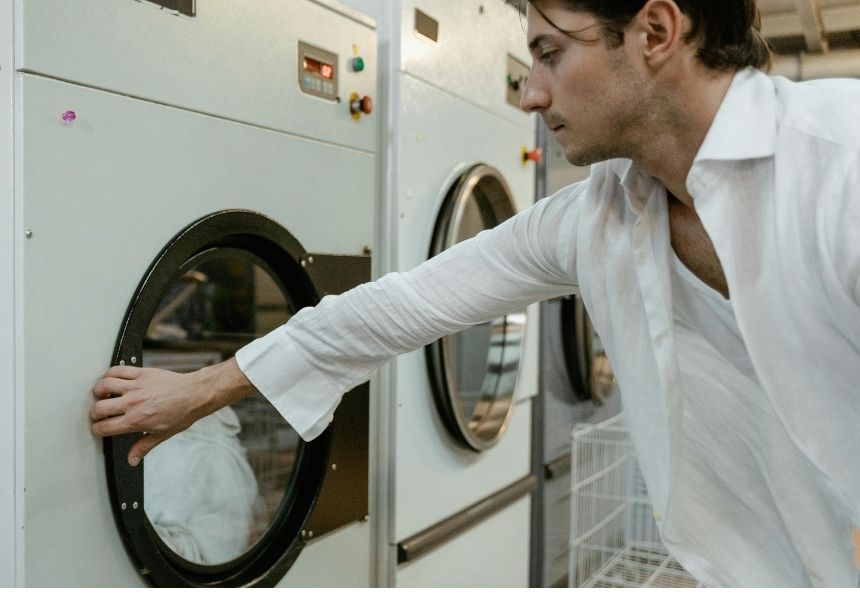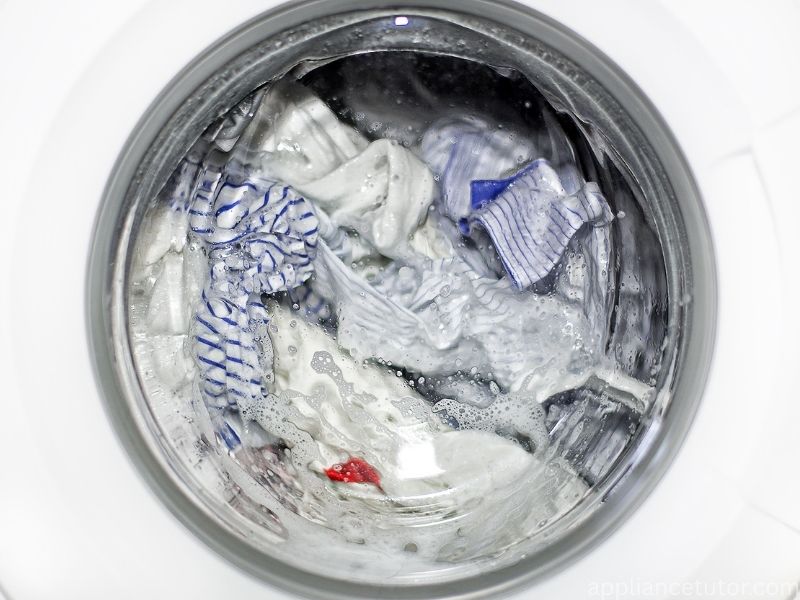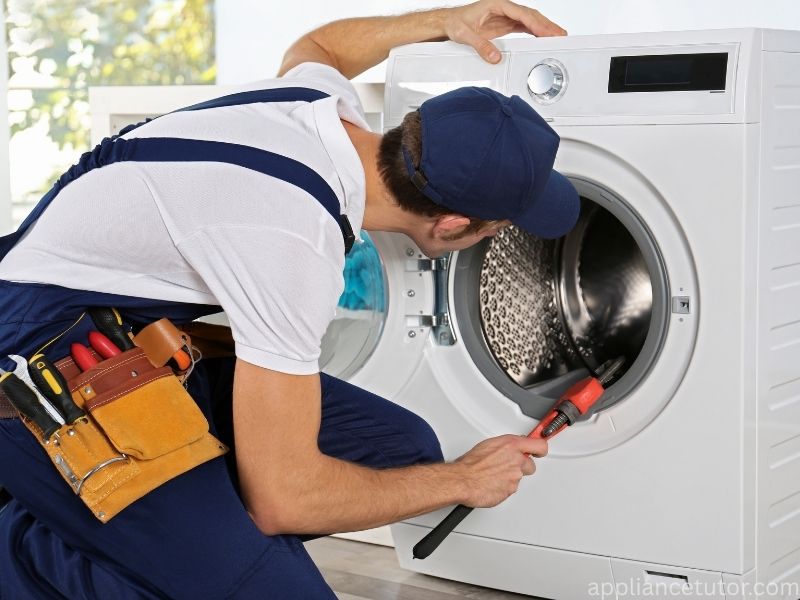When shopping for a new washing machine, many consumers are drawn to large-capacity models, assuming that bigger means better. While these machines offer convenience for large families or heavy laundry loads, they also come with several drawbacks that buyers should consider before making a purchase.
In this comprehensive guide, we’ll explore the key disadvantages of large-capacity washing machines, helping you decide whether they’re the right fit for your household.
What Is a Large-Capacity Washing Machine?

Before we discuss the drawbacks, let’s clarify what we mean by a large-capacity washing machine. These machines typically have a drum capacity of 10 kg or more (some even go up to 15 kg or higher). They’re designed to handle bulky items like comforters, blankets, or large loads of laundry in one go. Popular brands like Brand Name 1. and Brand Name 2. offer models with advanced features like smart controls, energy-saving modes, and multiple wash cycles.
While their ability to tackle big loads is appealing, there are several reasons why a large-capacity washing machine might not be the best fit for every household. Below, we’ll explore the key disadvantages in detail.
1. Higher Initial Cost
One of the most significant disadvantages of large-capacity washing machines is their price tag. These models tend to be more expensive than standard or mid-sized washing machines due to their larger drums, advanced technology, and additional features.
For example, a high-end large-capacity washer from Brand Name with smart connectivity and eco-friendly settings could cost anywhere from $800 to $1,500 or more. In contrast, a compact or mid-sized model might be available for $400 to $700. For budget-conscious buyers or smaller households, this price difference can be a major deterrent.
- Why It Matters
If you don’t regularly wash large loads or bulky items, the extra capacity may not justify the upfront cost. Instead, you might be better off investing in a more affordable model that meets your needs without breaking the bank. Check out our recommended mid-sized washing machines for cost-effective options.
2. Increased Energy and Water Consumption

Large-capacity washing machines often require more energy and water to operate, especially when running full loads. While many modern models are designed with energy-saving features, the sheer size of the drum means they still consume more resources compared to smaller machines.
- The Numbers Tell the Story
According to the U.S. Department of Energy, large-capacity washers can use up to 20-30 gallons of water per cycle, depending on the model and settings. In contrast, high-efficiency compact washers may use as little as 10-15 gallons. Similarly, energy consumption for large-capacity machines can be 20-30% higher, especially for models without an ENERGY STAR certification.
- Impact on Utility Bills
For households that do laundry frequently, this increased resource usage can lead to higher utility bills over time. If you’re looking to minimize your environmental footprint or keep energy costs low, a smaller, energy-efficient washer might be a better choice. Explore our top picks for energy-efficient washing machines to save on utilities.
3. Larger Physical Footprint
Another downside of large-capacity washing machines is their size. These models are bulkier and require more space in your laundry room or utility area. If you live in a small apartment, condo, or home with limited space, fitting a large-capacity washer can be a challenge.
- Dimensions to Consider
On average, large-capacity washing machines measure about 27-30 inches wide, 30-34 inches deep, and 38-42 inches tall. Compare that to compact models, which can be as narrow as 24 inches and shorter in height. Additionally, you’ll need extra space for ventilation, door clearance, and hose connections.
- Installation Challenges
If your laundry area has narrow doorways or tight corners, installing a large-capacity washer can be tricky. You may also need to invest in a compatible dryer or adjust your existing setup, adding to the overall cost. For space-conscious buyers, we recommend checking out compact washing machines designed for small spaces.
4. Longer Wash Cycles

While large-capacity washing machines can handle bigger loads, they often take longer to complete a wash cycle. This is because the machine needs more time to thoroughly clean and rinse larger volumes of laundry.
- How Long Are We Talking?
Depending on the model and settings, a full load in a large-capacity washer can take 60-90 minutes or more per cycle. Heavy-duty or specialty cycles (like those for blankets or delicates) can extend this time even further. If you’re someone who values speed and efficiency, this could be a significant drawback.
- Why It’s a Problem
For busy households or individuals with tight schedules, longer wash times can disrupt daily routines. If you prefer quick wash cycles, consider models with express wash options or explore our guide to fast-cycle washing machines.
5. Potential for Underloading Issues
Ironically, one of the biggest disadvantages of large-capacity washing machines is that they’re not always ideal for small loads. Many households don’t generate enough laundry to fill the drum regularly, leading to underloading.
- Why Underloading Is a Problem
Running a large-capacity washer with a partially filled drum wastes water, energy, and detergent. It can also affect the machine’s performance, as clothes may not agitate properly, leading to uneven cleaning. Some modern models have load-sensing technology to adjust water and energy usage, but this feature isn’t universal and may not fully mitigate the issue.
- The Solution
If your laundry needs vary, a mid-sized or adjustable-capacity washer might be more practical. These models offer flexibility for both small and large loads, ensuring efficiency no matter the load size. Browse our selection of versatile washing machines (#) for options that adapt to your needs.
6. Higher Maintenance and Repair Costs

Large-capacity washing machines are complex appliances with advanced components, which can translate to higher maintenance and repair costs. The larger drum, specialised motors, and smart features increase the likelihood of costly repairs if something goes wrong.
Common Issues
Some common problems with large-capacity washers include:
- Drum bearing failures due to heavy loads
- Motor burnout from frequent use
- Malfunctions in smart sensors or control panels
Repairing these issues can cost $100-$500 or more, depending on the brand and model. Additionally, replacement parts for high-end or large-capacity machines are often more expensive than those for standard models.
- Protect Your Investment
To minimise maintenance costs, consider purchasing an extended warranty or investing in a model known for durability. Check out our reviews of reliable washing machines (#) to find options with strong track records.
7. Limited Portability
If you move frequently or rent your home, the weight and bulk of a large-capacity washing machine can be a hassle. These machines are heavy—often weighing 200 pounds or more—making them difficult to transport or relocate.
- Why It’s an Issue
Moving a large-capacity washer requires professional help or specialized equipment, adding to relocation costs. For renters or those in temporary housing, a portable or compact washer might be a more practical choice. See our recommendations for portable washing machines (#) for easy-to-move options.
8. Environmental Impact
For eco-conscious consumers, the environmental impact of large-capacity washing machines is a notable concern. As mentioned earlier, these models consume more water and energy, contributing to a larger carbon footprint. Additionally, their production and disposal involve more resources compared to smaller machines.
Going Green
If sustainability is a priority, look for ENERGY STAR-certified models or consider smaller washers with eco-friendly settings. Our guide to eco-friendly washing machines highlights top picks for reducing your environmental impact.
9. Overkill for Small Households
For singles, couples, or small families, a large-capacity washing machine is often more than you need. If you typically wash small to medium loads, the extra capacity goes unused, leading to inefficiencies in water, energy, and detergent usage.
- Finding the Right Fit
A mid-sized washer with a capacity of 6-8 kg is usually sufficient for small households. These models strike a balance between functionality and efficiency, saving you money in the long run. Explore our curated list of washing machines for small households (#) to find the perfect match.
10. Noise and Vibration
Large-capacity washing machines can be noisier than their smaller counterparts, especially during high-speed spin cycles. The larger drum and heavier loads create more vibration, which can be disruptive in small homes or apartments.
- How to Minimise Noise
To reduce noise and vibration, ensure the machine is level and placed on a sturdy surface. Some models come with anti-vibration technology, but these features often come at a premium. If quiet operation is a priority, check out our reviews of quiet washing machines (#).
- Are Large-Capacity Washing Machines Worth It?
Despite their disadvantages, large-capacity washing machines can still be a great choice for certain households. If you have a large family, frequently wash bulky items, or run a business like a laundromat, the ability to handle big loads can save time and effort. However, for many consumers, the drawbacks—higher costs, larger footprint, and increased resource usage—outweigh the benefits.
Before making a purchase, consider your household size, laundry habits, and budget. If a large-capacity washer doesn’t seem like the right fit, there are plenty of alternatives that offer efficiency, affordability, and performance.
Alternatives to Large-Capacity Washing Machines
If you’ve decided a large-capacity washer isn’t for you, here are some alternatives to consider:
- Mid-Sized Washers (6-8 kg): Perfect for small to medium households, these models offer a balance of capacity and efficiency.
- Compact Washers: Ideal for apartments or small spaces, compact washers are portable and energy-efficient.
- Stackable Washer-Dryer Combos: Save space without sacrificing functionality with a stackable set.
- High-Efficiency (HE) Washers: Designed to use less water and energy, HE washers are eco-friendly and cost-effective.
Browse our affiliate links to explore top-rated models in each category:
- Best Mid-Sized Washers
- Top Compact Washers
- Stackable Washer-Dryer Combos
- High-Efficiency Washers
How to Choose the Right Washing Machine
To avoid the pitfalls of a large-capacity washing machine, keep these factors in mind when shopping:
- Household Size: Match the machine’s capacity to your laundry needs.
- Space Constraints: Measure your laundry area to ensure the machine fits.
- Budget: Factor in both upfront costs and long-term utility expenses.
- Energy Efficiency: Look for ENERGY STAR certification or eco-friendly settings.
- Features: Prioritize features like quick wash cycles, load-sensing technology, or quiet operation based on your preferences.
For a step-by-step guide, check out our article on How to Choose the Perfect Washing Machine
FAQs About Large-Capacity Washing Machines
1. Are large-capacity washing machines worth the investment?
It depends on your household size and laundry needs. For large families or those washing bulky items, they can be worth it. However, for smaller households, the higher costs and inefficiencies may not justify the purchase.
2. Do large-capacity washers use more water?
Yes, large-capacity washers typically use more water and energy, especially for full loads. Look for models with load-sensing technology to optimize resource usage.
3. Can I use a large-capacity washer for small loads?
While possible, running small loads in a large-capacity washer can waste water, energy, and detergent. Consider a mid-sized or adjustable-capacity model for flexibility.
4. How much space do I need for a large-capacity washing machine?
Large-capacity washers require about 27-30 inches in width, 30-34 inches in depth, and 38-42 inches in height, plus additional space for ventilation and hose connections.
5. Are there eco-friendly large-capacity washing machines?
Yes, some large-capacity washers are ENERGY STAR-certified and feature eco-friendly settings. Check product specifications or browse our eco-friendly washing machine guide (#) for recommendations.
.





